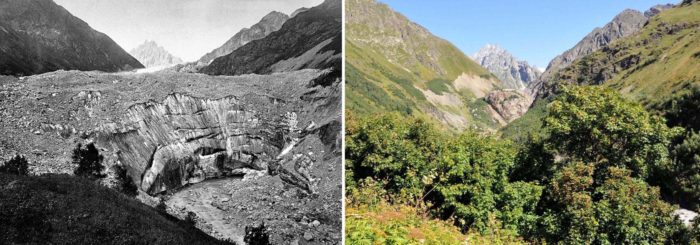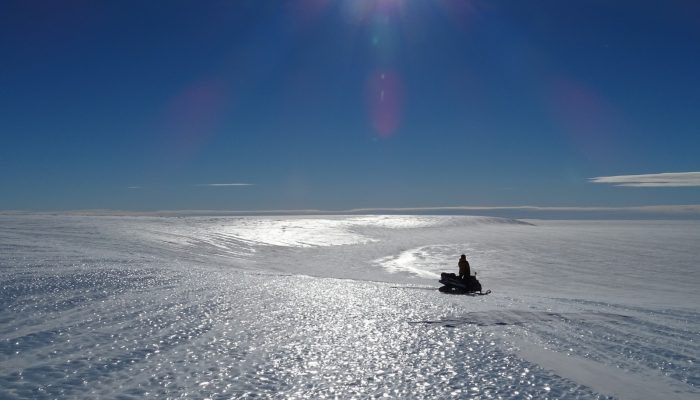We’re only just really starting to comprehend the state and fate of Himalayan glaciers due to a scarcity of research along the monumental mountain range. Climbers and scientists have been observing these lofty glaciers since the 1900s. However, is that looking back far enough? Glacier moraines, featuring in this Image of the Week, can reveal change extending back thousands of years. You may look a ...[Read More]
An interview with Jenny Turton, early-career representative for the cryo-division of the EGU
The European Geophysical Union (EGU) has a number of scientific divisions or themes, such as cryosphere, atmospheric sciences and geodesy. Each division has a representative for early career scientists, and often a team of scientists who write and edit blogs and organise events. Today, Jenny Turton, the new representative for the cryo-division, explains a bit more about the role and what she hope ...[Read More]
Image of the Week – Unravelling the mystery of the 2017 Weddell Polynya
The mysterious appearance and disappearance of the Weddell Polynya, a giant hole in the ice, has long puzzled scientists. Recent work reveals that it is tightly tied to energetic storms. Read on to find out more… The eastern side of the Weddell Sea is a region known for its low concentration of sea ice due to the presence of a seamount, an underwater plateau called the Maud Rise. The seamount infl ...[Read More]
Climate Change & Cryosphere – Caucasus Glaciers Receding

The Tviberi Glacier valley is located in the Svaneti Region – a historic province of the Georgian Caucasus. Between 1884 and 2011, climate change has led to a dramatic retreat of the ice in this valley. Other glaciers in the Greater Caucasus evolved in a similar way in past decades. We investigated glaciers and their changes both in-situ and with remote sensing techniques in the 53 river bas ...[Read More]
Image of the Week – The GReenland OCEan-ice interaction project (GROCE): teamwork to predict a glacier’s future
The GROCE project, funded by the German Ministry for Education and Research (BMBF), takes an Earth-System approach to understand what processes are at play for the 79°N glacier (also known as Nioghalvfjerdsfjorden), in northeast Greenland. 79°N is a marine-terminating glacier, meaning it has a floating ice tongue (like an ice shelf) and feeds into the ocean. Approximately 8% of all the ice contain ...[Read More]
Image of the Week – The Lost Meteorites of Antarctica…

When most people think of Antarctica, meteorites aren’t the first things that come to mind. Perhaps they imagine the huge ice shelves, the desolate interior, or perhaps penguin colonies near one of the scientific bases — but usually not meteorites. So why is our project looking for meteorites in Antarctica, and besides, aren’t they all lost until they are found? Let’s start with the A ...[Read More]
Image of the Week – Who let the (sun)dogs out?
How peaceful it is to contemplate the sky … This is especially true of polar northern or southern skies where the low temperatures can engender unique light phenomena. We often tend call them all, wrongly, sundogs, but in fact, many more phenomena exist. To list a few, you can observe a parhelic circle, a 22° halo, a pair of sun dogs, a lower tangent arc, a 46° halo, a circumzenithal arc, a parry ...[Read More]
Image of the Week – Kicking the ice’s butt(ressing)
Changes in the ice shelves surrounding the Antarctic continent are responsible for most of its current contribution to sea-level rise. Although they are already afloat and do not contribute to sea level directly, ice shelves play a key role through the buttressing effect. But which ice shelf regions are most important for this? The role of ice-shelf buttressing In architecture, the term “buttress” ...[Read More]
Image of the Week – Fifty shades of May (Glacier)
With over 198 000 glaciers in the world, you can always find a glacier that fits your mood or a given occasion. So why not for example celebrate the first Image of the Week of May with a picture of the aptly named May Glacier? May Glacier is in fact not named after the month, but after Mr May, an officer onboard the Flying Fish during her expedition to the East Antarctic coast in the 1840s. Apart ...[Read More]
Image of the Week – Life in blooming melting snow
The new snow melting season has just started in the mountains of Europe and will last, in many alpine places, until the end of June. Weather in the middle of April is changeable. In the last few days sub-zero air temperatures have prevailed in the mountains during the day. In a frame of an international research project, me (Charles University) and Daniel Remias (Applied University Upper Austria), ...[Read More]

